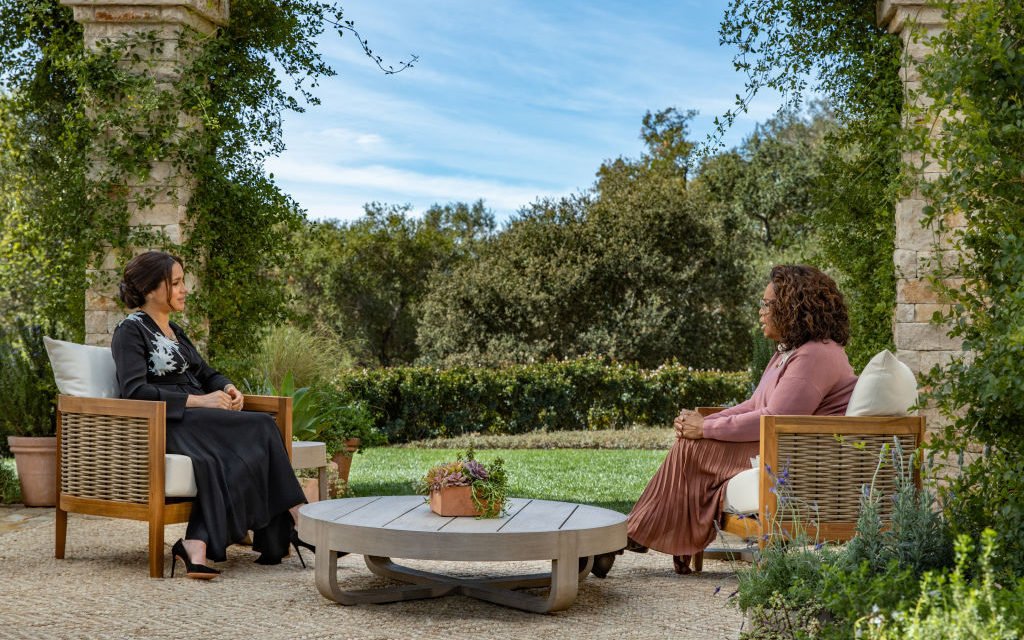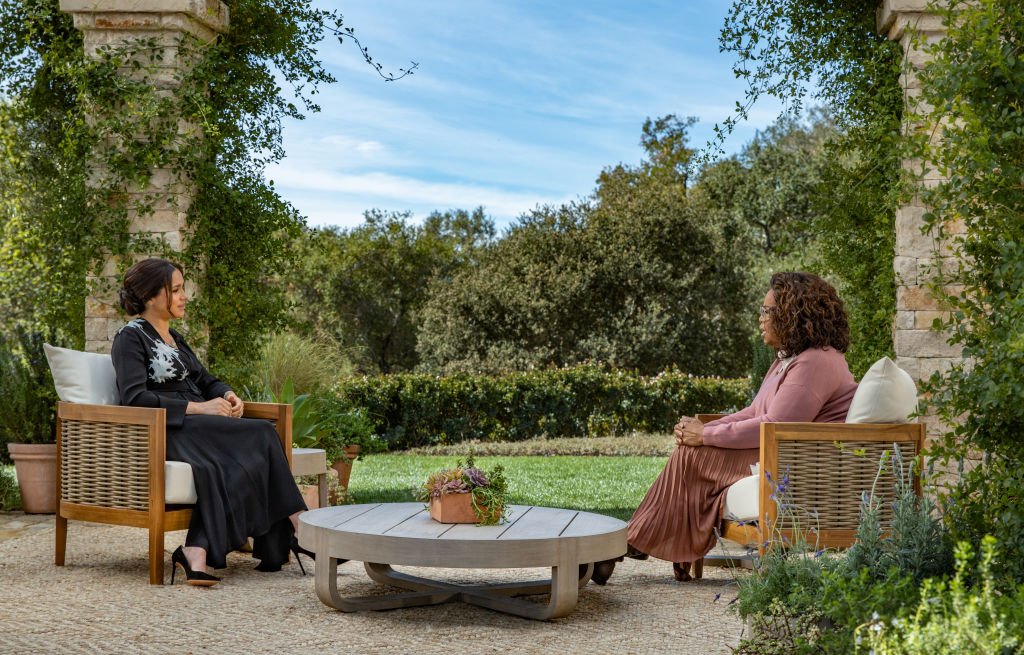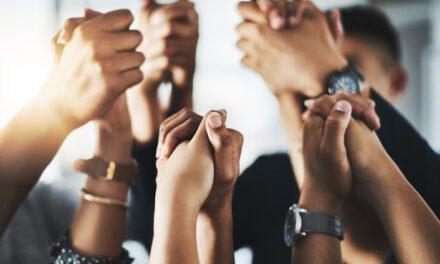I streamed Oprah Winfrey’s interview with Meghan Markle in the car after dropping my sister at the Baltimore airport. Like a student in an honors class, I listened intently as Meghan painfully recounted some of her darkest moments since joining the Royal Family — at the hands of those she should be able to trust the most. Tears streamed down my cheeks and emotion bubbled up as I navigated down 95. I felt a deep connection to what she said, and a familiar lump began choking my throat as her words brought her personal, dark and painful experiences to light. Even weeks later, as I write these words, tears are welling as that familiar and tightly wound ball rises from my gut. Royals, The Firm, and Institution aside, Meghan shared her version — our version — of sitting at the intersection of being Black and White in America.
The feelings that come with identifying as Mixed Race are apparently part of the territory. Being both Black and white has resulted in some of the most challenging and confusing emotions I’ve ever had to organize and articulate. Their existence has been one of the hardest secrets to keep. These emotions are often unintentionally stoked by our closest circles of friends, family, colleagues and community. Speaking out, or asking for help with them never seemed like a good or available idea.
Being both Black and white has resulted in some of the most challenging and confusing emotions I’ve ever had to organize and articulate. Their existence has been one of the hardest secrets to keep. Share on XMy sister and I share half our DNA — the white side. My father is Black, hers white. She was raised by our white mother and her white father. A few weeks after my birth, I was dropped off at a New York adoption agency. It was the mid-seventies. I was born to my young biological parents amidst Roe v. Wade and in a racially–divided Buffalo. My mom’s family appeared to believe Baby Mixed Me would be impossible and unfortunate to raise. My father’s family fought for their rights to take over custody, only to realize by the time I was gone, they had no rights. I was adopted to a white family without my father’s permission and deemed a “special needs” baby due to my mixedness. I existed in an unknown and alone space, searching for connectedness, validation and belonging for decades.
As a young girl, I can recall being met with realization I was different from my classmates and friends. In high school, I was legitimately confused when someone referred to my white boyfriend as a “N- lover.” When I transferred due to a family move, Black girls in my new school were vocal and furious that the Black boys liked the new “white girl.” When I arrived on campus in Tuscaloosa, Alabama, with confidence and promise in my eyes, I felt ready to take on a world… for which I wasn’t quite prepared. I would soon find college would be no different — or rather, more intense.
I would hear of an incident in a town 150 miles from my campus nestled in the east of the state: Wedowee, Alabama, with a population of 823. A white principal in the town railed against interracial dating. The junior class president, ReVonda Bowen, who has a Black mother and a white father, reportedly asked Principal Huland Humphries what his declaration meant for her. Humphries replied that ReVonda’s parents had “made a mistake” by conceiving her. Later, an arson fire would gut the high school. Civil rights groups descended on Wedowee to advocate and march while the Klan made its presence known. Federal agents and reporters flocked to town. The way one AP reporter put it, “Scenes from the Summer of ’64 in the South are Wedowee 1994.” I watched the story and never forgot about that little town of Wedowee. After a paid leave, the principal would be reinstated, and eventually was elected to be Superintendent of the School District three years later. In a karmic twist of fate, on March 31, 2020, the Hulond Humphries Stadium on the RCHS campus in Wedowee sustained extensive damage after high winds blew into Wedowee[1].
Oprah Winfrey’s interview with Meghan Markle attracted 17.1 million U.S. viewers on CBS, according to preliminary Nielsen figures[2] and the global viewership reflects nearly 50 million[3]. As the data continues to come in, the overall number is expected to rise. While it is not surprising that so many viewers tuned in after the preshow hype and expected bombshell view of the Royals, I viewed it differently. I saw a beautiful mother, wife, daughter and woman who was in pain from not only her current professional and personal experiences, but from a lifetime of being Mixed in America.
While it's not surprising that so many viewers tuned in expecting a bombshell view of the Royals, I viewed it differently. I saw a beautiful mother, wife, daughter and woman who was in pain from a lifetime of being Mixed in America. Share on XMeghan’s decision to share her personal experience took courage and vulnerability — a decision she likely did not have the privilege to take lightly. Rather, she freed the elephant in the room, Olivia Pope style. No, Piers Morgan, neither Meghan nor I need your validation to justify the plausibility of our experiences to make them real. Stop normalizing counterclaims and questions (Yes, I am talking to you Sharon Osborne) about our experiences that are directly based on reaction to our skin color — an involuntary output of our DNA, which directly impacts them.
When I spoke to my sister about the interview, it became clear that we did not hear Meghan’s words with the same emotions, burn or nods due to familiar takeaways of living Mixed in America. Her takeaway was simple: screw Piers Morgan and all the haters. On the other hand, I saw an obligation, a calling. I wanted to focus on support for Meghan and for the estimated 9.1 million (2.8%) U.S. citizens identifying as Two or More Races finding their voice and confidence; encouraging us all to ignore the negative words from those never even close to walking a split second in our racially divided and complicated — albeit beautiful — bridge between worlds that collided in creation.
In an Elle magazine article published in 2015, a far less globally–known Meghan Markle (pre-Duchess status) articulated her Mixed experience. Her words are not some publicity stunt for retribution to the Royals; it’s been her story all along. She’s just now finding the courage to speak.
Now here is the ask: Employers, mentors, partners, family and friends still look for Mixed folks to choose one race or the other. Stop. Give us room to share who we are and to join in those conversations. Allow us to choose how we want to identify — don’t decide for us. Don’t assume we are not Black enough to experience the pain of racism, or that we are automatically white enough to benefit from the privilege. These conversations are difficult and need to happen… so keep having them. This is how healing for us can happen, and how our full selves can have a chance to show up.
Employers, partners, family & friends still look for Mixed folks to choose one race or the other. Stop. Give us room to share who we are. Allow us to choose how we want to identify - don’t decide for us. Share on XWith the events of the past year, my inner thirteen-year-old girl resurfaced. I felt a familiar feeling of standing on a fence, somewhere between Black and white, manifesting more upset on top of my already deeply–wired anxieties in terms of race and racism. This year impressed confusion and insecurities that presumably I had already sorted over time. Turns out they were not gone; they were simply suppressed. Unlike Meghan, who said she was “silenced,” for a good part of my life, I suffered from self-silencing. I did not know how to broach the subject of being Mixed in America in a productive way with my family or friends. For me, belonging finally came by way of an ancestry search and having the opportunity to connect with the history of who and where I came from. The sense of the unknown had been weighing my body and mind down for decades. I have this recurring vision: me talking to Baby Mixed Me, crouching down and looking in my own eyes, holding my hands in my own outstretched hands and saying, “You are enough. Trust yourself and your journey. Be confident, continue to be compassionate, you were born. You are not a mistake.”
To anyone struggling with their Mixed racial identity of any combination, and for anyone searching for acceptance, connectivity and belonging, I encourage you to remember a few things as you navigate your way:
- Find refuge in the people and places that provide support and bring joy.
- Protect your story; not everyone deserves to hear it.
- Find your voice, and in your way, speak up and speak out so anxieties are not bottled within.
- Your experiences are real. Period.
- You are seen, and you are not alone.
- You are not a mistake, and you belong.
[1] https://www.therandolphleader.com/sports/article_3837568c-7434-11ea-a322-233c565800d3.html




















